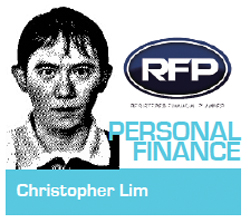Introduction to Mutual Funds Part II
In mutual funds, once you removed the front-end fee, the rest of your money will be invested directly and immediately to the mutual fund of your choice

Last of two parts
BEFORE we continue, let us recap the important points covered last week.
So how do mutual funds differ from other financial instruments like government treasuries, bonds and stocks?
For mutual funds, investors will only need to provide the investment money and indicate their choice of mutual fund to the company, and the fund manager will be the one to select and manage the investment. For the rest (i.e., government treasures, bonds and stocks), investors would have to personally identify, buy and sell these as applicable.
This is the reason mutual funds perfectly fit busy professionals or individuals specializing in other fields, as everyone can enjoy the benefit of the growth in the financial market, even if they do not have the time or knowledge.
Below are the recommended mutual funds according to type of investor. Please note that the returns mentioned are as of May 17:
Conservative investor. Investment horizon is less than three years; best suited to invest in bond fund
• First Metro Save and Learn Fixed Income Fund Inc.—five years average return of 12.27 percent
• Phil Equity Peso Bond Fund Inc.—five years average return of 11.22 percent
• Philam Bond Fund Inc.—five years average return of 10.49 percent
Moderate investor. Investment horizon is three to seven years; best suited to invest in balanced fund
• First Metro Save and Learn Balanced Fund Inc.—five years average return of 27.94 percent
• Philam Fund Inc.—five years average return of 20.22 percent
• Pami Horizon Fund Inc.—five years average return of 19.57 percent
Aggressive investor. Investment horizon is more than seven years; best suited to invest in stock/equity fund
• First Metro Save and Learn Equity Fund Inc.—five years average return of 26.58 percent
• Phil Equity Fund Inc.—five years average return of 26.21 percent
• Philam Strategic Growth Fund Inc.—five years average return of 22.76 percent
• Phil Equity PSE Index Fund Inc.—five years average return of 21.79 percent
So how do you get started on mutual funds?
Depending on the mutual fund you choose, you can start as low as P5,000 to P10,000. For some, like the Phil Equity Index Fund, the initial investment is P200,000. For subsequent investments in the same mutual fund, the amount can be as low as P1,000 to P2,000.
Since there are costs associated with fund houses and fund managers, there are fees involved in mutual funds. The common ones are:
Front-end fees. 2 percent to 3 percent (depending on the mutual fund) of the money invested is charged immediately. For example, if you invested P100,000 and the fee is 3 percent of it, only P97,000 will be used to purchase mutual-fund shares; P3,000 goes to the company.
Back-end fees. 2 percent to 3 percent (depending on the mutual fund) of the money invested is charged if you withdraw. For example, if you invested P100,000 and the investment has grown to P200,000, then you decide to withdraw it at an exit fee of 3 percent, you will receive P194,000 and the company gets to keep P6,000.
The fees are very reasonable, considering that you will just invest the money and let the fund manager take care of it. Prior to mutual funds, this type of investment facility is only available to high net-worth individuals. So, let us also participate in what high net-worth individuals are investing in.
Just a final point: how are mutual funds different from variable universal life (VUL)? This is not a basic concept, but a very important one to understand early on. Please try to digest as much as possible.
A VUL is an insurance product with an investment component. Typical VUL products are multiyear payment terms. Since VUL products are insurance first before investments, most of the premiums you pay on the first three years go to paying your insurance. Only a tiny portion is used to purchase mutual funds. Since we are all aware of the power of compounding, that three-year difference is very significant.
In mutual funds, once you removed the front-end fee, the rest of your money will be invested directly and immediately to the mutual fund of your choice.
If you would like to start investing in mutual funds, but are still unsure how to go about it, please feel free to get in touch with me. I can guide you on the procedures and other technical matters that may need clarification.
****
 Christopher Lim is a Registered Financial Planner of RFP Philippines. He is a co-founder of www.pinoyFIQ.com and an investor on Financial and Real Estate industries. He is also a Coach and Resource Speaker on Financial Management, Investments (such as Bonds, Mutual Funds, Stocks, and Derivatives), Estate Planning, and Real Estate.
Christopher Lim is a Registered Financial Planner of RFP Philippines. He is a co-founder of www.pinoyFIQ.com and an investor on Financial and Real Estate industries. He is also a Coach and Resource Speaker on Financial Management, Investments (such as Bonds, Mutual Funds, Stocks, and Derivatives), Estate Planning, and Real Estate.
Source: http://www.businessmirror.com.ph/index.php/en/business/banking-finance/14785-2013-06-10-11-49-45
Comments
2,856 total views, 1 views today












Social